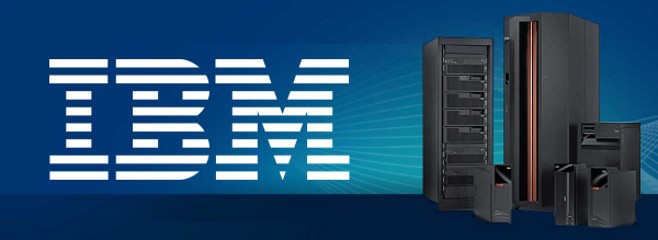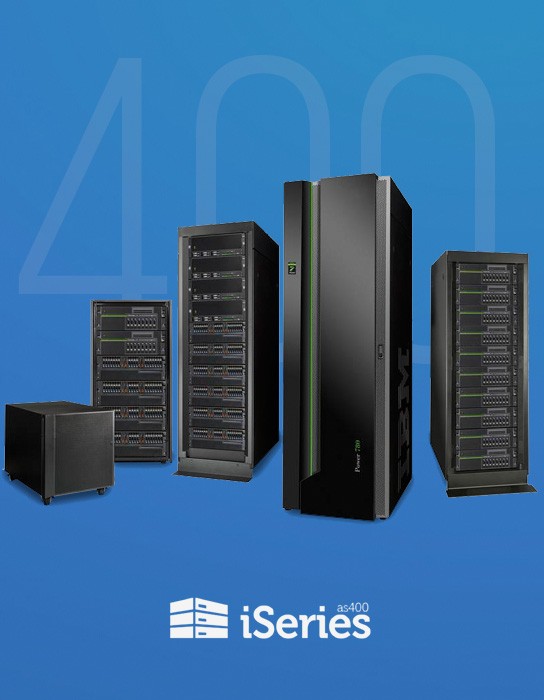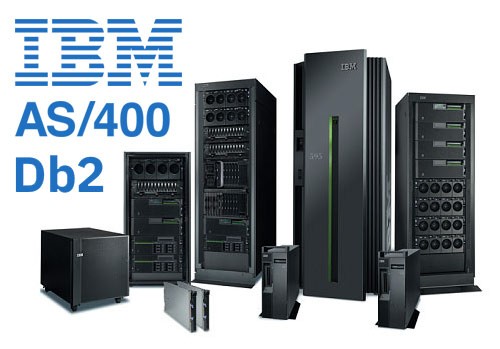Summary
Embark on a journey through the dynamic realm of iSeries Hosting Services, where efficiency meets innovation.
This article serves as your gateway to understanding how cloud hosting can revolutionize your business operations.
Tailored for entrepreneurs and IT professionals, we’ll uncover the seamless integration and robust capabilities that iSeries Hosting offers, ensuring you’re equipped with the knowledge to make informed decisions for your technological infrastructure.
What is iSeries Hosting?
The iSeries, also known as the IBM AS/400, has a rich history in enterprise computing.
Originally designed as a midrange computer system, it has evolved over the years to become a powerful platform for businesses.
But what exactly is iSeries Hosting?

Definition and Explanation
iSeries Hosting refers to the practice of hosting IBM iSeries applications and workloads on cloud infrastructure.
Instead of maintaining on-premises servers, businesses can leverage cloud service providers to host their iSeries applications, databases, and other critical components.
This shift to the cloud offers several advantages, including scalability, cost savings, and enhanced security.
The Role of iSeries in Modern Business Infrastructure
The iSeries plays a crucial role in supporting mission-critical applications. From financial systems to inventory management, companies rely on iSeries for seamless operations.
By transitioning to iSeries Hosting, organizations can harness the benefits of cloud technology while maintaining compatibility with their existing iSeries applications.
In the next paragraph, we’ll explore the specific advantages of iSeries Cloud Hosting and how it can transform your business.
Benefits of iSeries Cloud Hosting
Cost Savings and Budget Optimization
iSeries Hosting on the cloud offers significant cost advantages. Here’s how:
Reduced Infrastructure Costs: By migrating to the cloud, businesses eliminate the need for maintaining physical servers, cooling systems, and data center space. This translates to lower capital expenditures (CapEx).
Pay-as-You-Go Model: Cloud providers offer flexible pricing models, allowing organizations to pay only for the resources they consume. Whether it’s storage, processing power, or network bandwidth, you’ll pay based on actual usage.
Scalability without Overprovisioning:With iSeries Cloud Hosting, scalability is seamless. As your business grows, you can easily scale up resources without overcommitting upfront. No more guessing about future capacity requirements.
Enhanced Security and Reliability
Data Encryption: Cloud providers implement robust encryption protocols to safeguard your data during transit and storage. This is especially critical for sensitive business information.
Redundancy and High Availability:Cloud data centers are designed with redundancy in mind. Your iSeries workloads benefit from multiple data copies across geographically dispersed locations, ensuring high availability and disaster recovery.
Regular Security Updates: Cloud providers actively monitor and patch vulnerabilities. You’ll receive automatic security updates without the hassle of manual maintenance.
Scalability and Flexibility for Business Growth
Dynamic Resource Allocation: iSeries Cloud Hosting allows you to adjust resources on demand. Whether you’re launching a new product or experiencing seasonal spikes, the cloud adapts to your needs.
Global Reach: Cloud services operate across regions, enabling businesses to expand their reach without physical limitations. Serve customers in the US, Canada, or beyond seamlessly.
Integration with Modern Technologies:Cloud environments integrate smoothly with DevOps tools, APIs, and microservices. This synergy enhances agility and innovation.
We’ll guide you through choosing the right iSeries Hosting provider below.

Choosing the Right iSeries Hosting Provider
When it comes to selecting an iSeries Hosting provider, the decision can significantly impact your business’s efficiency and growth. Here are key factors to consider:
Factors to Consider When Selecting a Provider
Experience and Expertise: Look for providers with a proven track record in iSeries hosting. Their experience often translates into better service and support.
Security Measures: Ensure the provider offers robust security protocols, including firewalls, intrusion detection systems, and regular security audits.
Compliance Standards: Verify that the provider adheres to industry compliance standards relevant to your business, such as HIPAA, SOC 2, or GDPR.
Customer Support: Evaluate the provider’s customer support services. 24/7 support and a variety of contact methods are essential for resolving issues promptly.
Service Level Agreements (SLAs):Review the SLAs carefully. They should guarantee uptime, performance, and compensation for any service disruptions.
Comparison of Top iSeries Hosting Services
While we won’t endorse specific providers, it’s beneficial to compare services based on:
- Performance Metrics: Compare the uptime statistics and performance benchmarks.
- Customer Reviews: Look for feedback from other businesses similar to yours.
- Pricing Models: Consider the total cost of ownership, not just the upfront pricing.
User Testimonials and Case Studies
User testimonials and case studies can provide valuable insights into a provider’s reliability and customer service.
Seek out stories from businesses that have made the transition to iSeries Hosting and learn from their experiences.
In the following paragraphs, we’ll discuss the steps for migrating from on-premises to cloud and how to overcome common challenges during the transition.
Transitioning to iSeries Cloud Hosting
Migrating your iSeries applications to the cloud is a significant step towards modernizing your IT infrastructure. Here’s how to approach the transition:
Steps for Migrating from On-Premises to Cloud
Assessment and Planning: Begin with a thorough assessment of your current iSeries environment. Identify the applications, databases, and workloads that will move to the cloud.
Choosing a Migration Strategy: Decide on a migration strategy that suits your business needs. Options include rehosting (lift-and-shift), refactoring, or rebuilding.
Data Backup: Ensure all data is backed up before migration. This is crucial for protecting against potential data loss during the transition.
Testing the Environment: Set up a test environment in the cloud. This allows you to address any compatibility issues before the full migration.
Execution: Migrate your applications and data to the cloud provider’s environment. This step should be carefully managed to minimize downtime.
Post-Migration Review: After migration, conduct a post-migration review to ensure everything is functioning as expected.
Overcoming Common Challenges During Transition
Compatibility Issues: Some legacy iSeries applications may not be immediately compatible with cloud environments. Work with your provider to address these challenges.
Security Concerns: Establish clear security protocols for the cloud. This includes setting up firewalls, encryption, and access controls.
Performance Optimization: Monitor the performance of your iSeries applications in the cloud. Fine-tune configurations for optimal results.
Employee Training: Ensure your staff is trained to manage and operate the new cloud-based iSeries environment.
Cost Management: Keep a close eye on your cloud spending. Utilize cost-management tools provided by cloud services to avoid unexpected expenses.
By following these steps and preparing for potential challenges, your transition to iSeries Cloud Hosting can be smooth and successful.

Best Practices for Managing iSeries Hosting
Maintaining an iSeries hosting environment requires diligence and strategic planning. Here are some best practices to ensure your iSeries cloud hosting is managed effectively:
Regular Monitoring and Maintenance
Regular System Checks: Schedule daily system checks to monitor the health of your iSeries environment. Look for any unusual activity or performance issues.
Update and Patch Management: Keep your system up-to-date with the latest patches and updates. This not only secures your environment but also ensures you have the latest features.
Backup and Disaster Recovery Plans:Implement a robust backup strategy. Regular backups and a clear disaster recovery plan are essential for business continuity.
Leveraging Expertise and Support
Utilize Provider Resources: Take advantage of the resources and support offered by your hosting provider. Their expertise can be invaluable, especially when dealing with complex issues.
Training and Knowledge Sharing:Encourage continuous learning for your IT team. Regular training sessions can help your staff stay current with the latest iSeries hosting practices.
Community Engagement: Participate in forums and user groups. The iSeries community is a rich source of knowledge and can provide support and insights.
Performance Optimization
Resource Utilization Analysis: Analyze your resource usage patterns. Optimize your environment based on these insights to ensure efficient operation.
Application Performance Monitoring: Use monitoring tools to track the performance of your applications. This can help you quickly identify and resolve any bottlenecks.
Scalability Planning: Plan for future growth. Ensure that your iSeries hosting environment can scale up or down as needed without disrupting your operations.
By adhering to these best practices, you can maximize the efficiency and reliability of your iSeries hosting services. In the final section, we’ll look at the emerging trends and what the future holds for iSeries hosting.
The Future of iSeries Hosting
As technology continues to evolve, so does the landscape of iSeries hosting. Let’s explore some emerging trends and what the future holds for businesses relying on this robust platform:
Hybrid Cloud Solutions
The future lies in hybrid cloud environments that seamlessly integrate on-premises infrastructure with cloud services.
For iSeries hosting, this means businesses can maintain critical legacy applications on their own servers while leveraging the scalability and flexibility of the cloud for other workloads.
Expect to see more hybrid deployments that balance security, performance, and cost-effectiveness.
Containerization and Microservices
Containerization, using technologies like Docker and Kubernetes, is gaining traction. By encapsulating applications and their dependencies, businesses can achieve consistent deployment across different environments.
Microservices architecture, which breaks down applications into smaller, independent components, aligns well with containerization.
As iSeries applications evolve, adopting microservices and containers will enhance agility and scalability.
AI and Machine Learning Integration
Intelligent automation is reshaping IT operations. Expect iSeries hosting providers to incorporate AI and machine learning for predictive maintenance, resource optimization, and security monitoring.
These technologies will proactively identify performance bottlenecks, recommend optimizations, and enhance overall system reliability.
Edge Computing for Real-Time Processing
Edge computing brings computation closer to data sources, reducing latency and enabling real-time processing.
For iSeries workloads, this means running critical applications at the edge—whether in manufacturing plants, retail stores, or remote offices.
As IoT devices proliferate, edge computing will play a pivotal role in handling data-intensive tasks efficiently.
Enhanced Security Measures
Security remains paramount. Future iSeries hosting solutions will focus on zero-trust architectures, robust encryption, and continuous monitoring.
Multi-factor authentication, threat intelligence, and secure APIs will be integral components.
As cyber threats evolve, expect providers to stay ahead by implementing advanced security protocols.
Green Computing and Sustainability
Environmental consciousness is driving innovation. Data centers are exploring energy-efficient practices, renewable energy sources, and reduced carbon footprints.
iSeries hosting providers will increasingly adopt sustainable practices, benefiting both businesses and the planet.
Global Collaboration and Interoperability
As businesses expand globally, interoperability becomes crucial. iSeries hosting services will facilitate seamless collaboration across borders, ensuring consistent experiences for users regardless of their location.
Expect providers to offer geographically distributed data centers and low-latency connections.
In summary, the future of iSeries hosting is dynamic, adaptive, and forward-thinking. Businesses that embrace these trends will position themselves for success in an ever-evolving digital landscape.
References:
The insights and analyses presented in this article are enriched by the contributions of various experts. For further information and detailed perspectives, please refer to the following sources:


 source-data.com
source-data.com itsibi.com
itsibi.com










